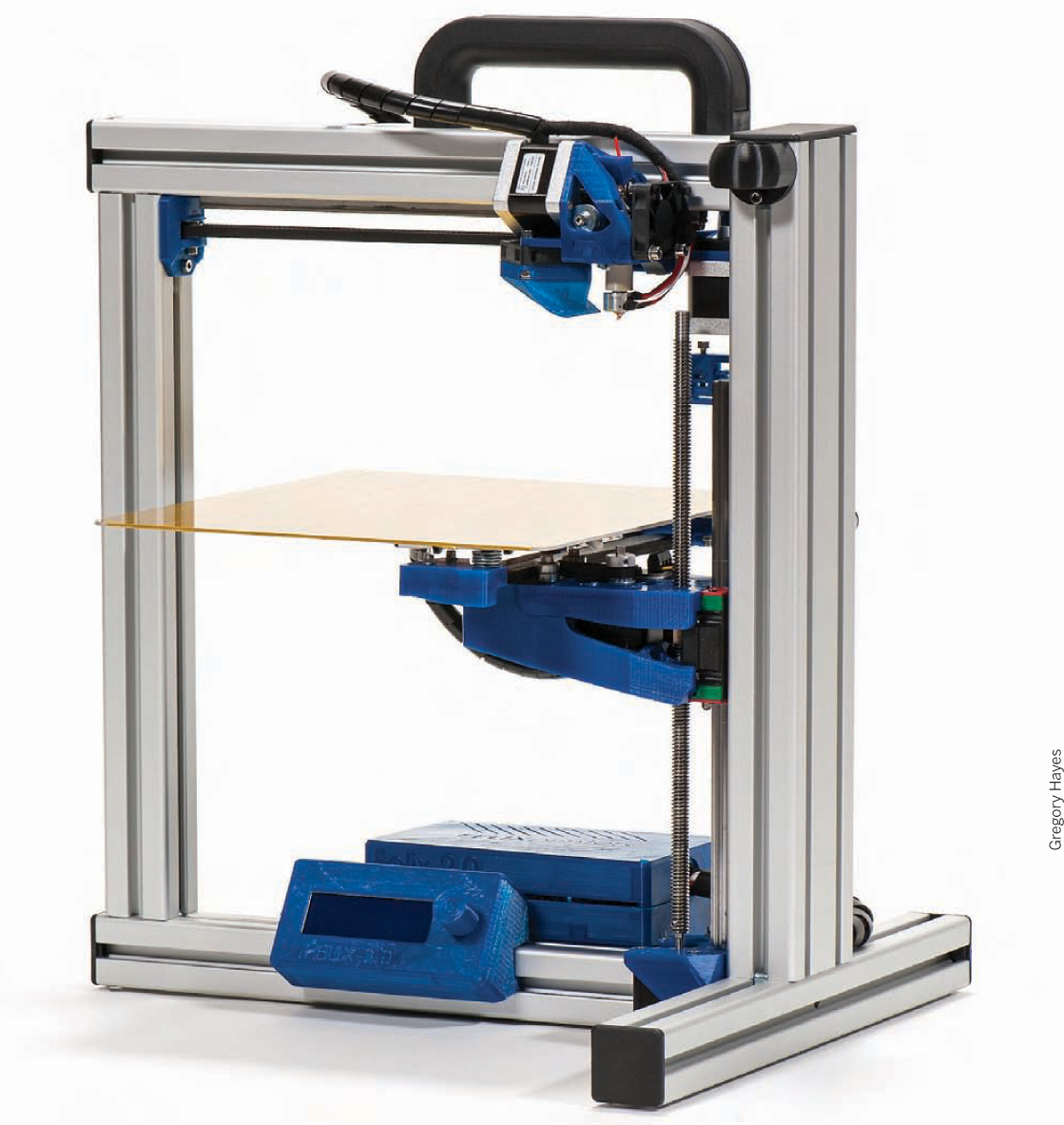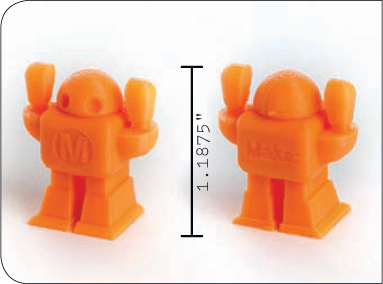FELIX 2.0
FELIX ROBOTICS / shop.felixprinters.com
Smart design, quality construction, and immaculate prints out-of-the-box.
![]() Price as tested $1,949 assembled
Price as tested $1,949 assembled
![]() Print volume 10″×8″×9¼″
Print volume 10″×8″×9¼″
![]() Heated bed? Yes
Heated bed? Yes
![]() Print materials PLA, ABS, nylon
Print materials PLA, ABS, nylon
![]() OS supported Linux, Mac, Windows
OS supported Linux, Mac, Windows
![]() Print untethered? Yes, onboard controls
Print untethered? Yes, onboard controls
![]() Open-source hardware? No
Open-source hardware? No
![]() Open-source software? Yes
Open-source software? Yes
![]() Printer control software Repetier-Host
Printer control software Repetier-Host
![]() Slicing software Skeinforge / SFACT
Slicing software Skeinforge / SFACT

A sleeper hit in our testing, the second-generation 3D printer from Netherlands-based Felix Robotics delivers on the promise it showed last year, with impressive hardware upgrades and greatly improved performance. Its extruded aluminum frame, augmented by 3D-printed parts, provides a simple and open design, and its heated aluminum build plate can hold large builds.
Easy Setup
The downloaded PDF instruction manual covers assembly, calibration, and software, with clear photos and step-by-step instructions. Felix works with the typical open-source controllers Repetier-Host and Pronterface, and they provide a package of Repetier-Host conveniently paired with SFACT slicing profiles. Setup was quick and easy in Windows; for Mac users, Felix recently added a Repetier download and instructions for installing SFACT profiles separately, though we weren’t able to test these.
Great Prints Right Out of the Box
Our out-of-the-box prints were immaculate. The Felix’s print quality shined on the small, overhanging diameters of the half-sized light bulb. The tolerances of our preassembled Heart Box were spot-on — straight off the platform, the box opened and rotated without any cleanup. SFACT uses a modified Skeinforge slicing engine that’s slower than other slicers, especially on large or complex prints. The provided profiles, and the machine itself, are optimized for 1.75mm PLA, but its heated bed and high-temp extruder (rated to 275°C) mean you can print ABS and other compatible plastics without hardware upgrades.
Felix ships with a 0.35mm nozzle, slightly smaller than the standard 0.4mm found on many machines — this may be partially responsible for the successful delicate prints, but it also adds increased print time for solid fill layers. Felix Robotics runs their production printers at 80mm/s and recommends 30–40mm/s for high-quality prints. At those speeds, it wasn’t the fastest machine in our shootout, but it felt quick and ran quiet, and a pro user could push it faster. The company lists a maximum speed of 200mm/s.
The large, heated aluminum print bed needed patient adjusting, but the builtin three-point leveling system was up to the task. There’s no spool holder, so we used the supplied spinner, which was ingeniously simple but needed frequent attention to avoid kinks and misfeeds. The aluminum frame and open design provide great strength and rigidity without needing a lot of extra construction, and a built-in handle makes transport easy. The Felix 2.0 has also upgraded all of its linear motion systems to top-of-the-line ball bearing slides that keep things perfectly aligned and smooth.
Onboard Controls and Upgrades
A mini SD card and integrated LCD display come as an optional upgrade with the Felix, for untethered printing. As of press time, there was no documentation available for the LCD display, but the operation is fairly straightforward.
It’s worth noting that Felix Robotics sells kits for converting last year’s Felix 1.0 and 1.5 to a 2.0. Kits are customizable so the user can choose which improvements are most important: printed parts, new motors, a heated bed, LCD, and more. If future upgrades are important to you, it’s nice to know this company is providing its early adopters with a path.
New Model: Felix 3.0
A new Felix, version 3.0, was not yet available for our review, but the company promises dual extrusion, a flatter heated bed, a new hot-end with exchangeable brass tips for easier cleaning, and more.
Conclusion
The Felix 2.0 has lot to be proud of — the prints were among the best in our shootout. These great results come with time tradeoffs due to the slicing profiles, but the hardware had few hangups, and the LCD upgrade promises untethered prints, important for printing big objects without a dedicated computer. If you’re looking for an upgradeable machine and a company that will make sure it can happen, the Felix 2.0 is an excellent printer for you. ![]()
![]() Upgraded, top-of-the-line linear ball bearing slides for high accuracy
Upgraded, top-of-the-line linear ball bearing slides for high accuracy
![]() Smart, modular design and excellent upgradeability
Smart, modular design and excellent upgradeability
![]() Optional mini SD card and integrated LCD display for stand-alone printing
Optional mini SD card and integrated LCD display for stand-alone printing
Makers, Tinkerers, Designers
![]() The default slicer, SFACT, isn’t a speed demon. Install PyPy on your computer to speed up your slicing times.
The default slicer, SFACT, isn’t a speed demon. Install PyPy on your computer to speed up your slicing times.
![]() When using the onboard controls, note that the stock profiles don’t include a preheat sequence. Make sure you preheat your extruder and bed before initializing a print.
When using the onboard controls, note that the stock profiles don’t include a preheat sequence. Make sure you preheat your extruder and bed before initializing a print.
The Felix 2.0 is a sleeper hit with a lot to be proud of. Its prints were among the best in our shootout.

HOW’D IT PRINT?

